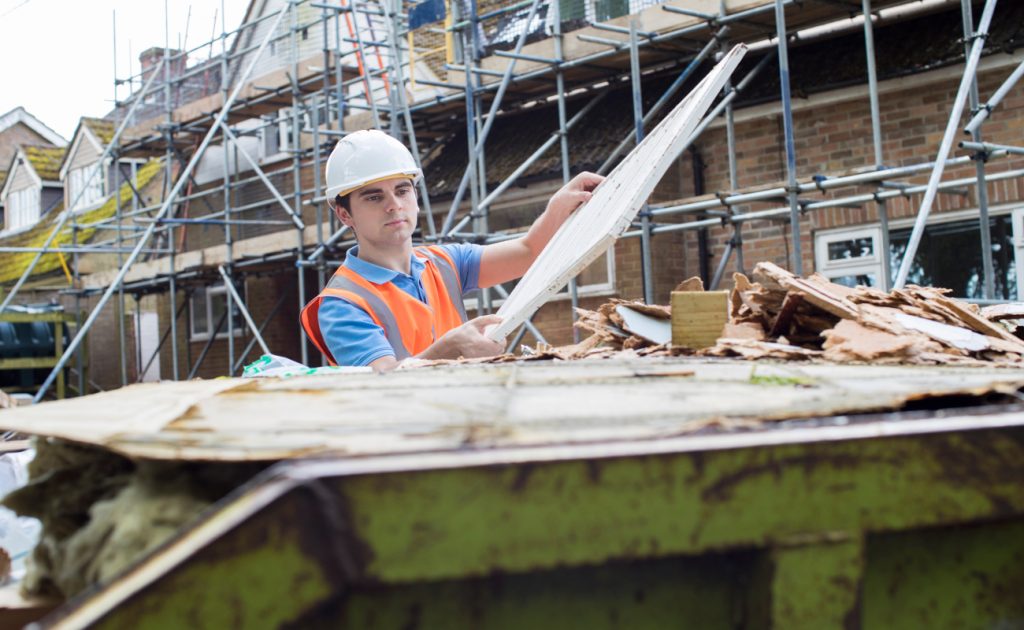Managing and monitoring waste produced on a construction site needs careful planning. By understanding how waste is generated, you will be able to prevent waste generation and manage it in a cost-effective manner

Most waste is produced onsite; by inadequate storage of materials, damage by mishandling materials, and over-ordering.
The true cost of waste in a construction project is often underestimated. About 13% of raw material is discarded, unused. Purchasing efficiency can be improved through reuse and waste prevention.
The design stage is essential in influencing how waste is produced in construction projects.
Waste reduction strategies fall in three broad categories:
1. Designing for Material Optimization
Reduce materials used in the building as well as waste produced during construction.
Program to make the most use of an asset
Provide flexible spaces that can perform multiple functions. This can even happen at a neighborhood scale. Smart planning can reduce built areas, furniture, and equipment to optimize the use of every space.
Design to optimize material use
Design efficient structural systems that use less material for the same performance. Rationalize MEP layouts to reduce material and energy usage from friction within ducts and pipes. Choose finish materials that serve multiple purposes or use structural materials that don’t require applied finishes.
Design to reduce waste during construction
Consider the construction process ahead of time so that you can determine what waste will be generated and then engage the contractor early on. To minimize cutting coordinate dimensions between modular materials and finish areas.
Designing off-site will also help. Studies show that off-site construction creates less waste by reducing errors and rework.
Design for deconstruction at the end of life of a building component
Different layers of a building have different life spans. Design for ‘slippage.’ This way, removal of short life-span layers can occur without disturbing longer life-span layers.
Design for easy refurbishment of isolated materials. It is helpful to design for replacement ease at the smallest level.
For ease of separation and deconstruction, fix components together by reversible means.
Consider suppliers who will take back materials at the end of life.
2. Material Selection
Creating a circular economy by reusing materials and specifying materials with recycled content.
Reuse existing materials—and buildings—onsite
Survey all materials and structures on the initial site visit and check if they can be reused. Reuse them at their highest capacity.
Use reclaimed components and materials
Reclaimed components and materials offer great savings. Reclaimed finish materials that offer good performance and aesthetics have entered the market. Reuse excavation material.
Specify Recyclable Materials With High Recycled Content
Choose local sourcing recycled materials like glass, which can replace cement in concrete. Also, consider materials that have high recycled content that can be recycled at the end of life in a circular continuous loop without downcycling.
3. Waste Management Planning
Planning for reducing waste right from the start of the project. This includes the pre-design phase, schematic design, and designing construction and development documents.
Require a Construction Waste Management Plan
Write out your construction waste management plan. It should require onsite storage and logistics and diversion goals. It should also state that some materials like furniture and carpets should be removed before the demo permit is issued.
Consider how the work sequence will impact waste generation. As much as possible, engage the contractor to discuss measures to reduce generation of waste.
Generation of waste will be unavoidable at a construction site.
Consider installing a trash chute to move the waste to a central collection point.
Trash will be placed inside the opening of the chute at different points in the building. It will then fall to the lowest level of the building.
Some advantages of using a trash chute are: safety; in the absence of a trash chute workers would have to physically handle trash bags or cart out the trash, they could hurt themselves in the process. Another advantage is efficiency. Without a chute, workers may have to lower the garbage through a window or secure it before taking it down using elevators. With a chute, workers can just send the trash down the chute easily and quickly.
Reduce Surplus Material
Minimize ordering with just-in-time purchasing and specify takeback for surplus materials. Also, consider suppliers that use reusable packaging schemes. Reject and send back oversized packaging and void fillers.
A great way to reduce surplus material is by using a trash compactor. These are great for processing non-recyclable materials. Garbage is loaded into the input chamber and subjected to immense pressure using a hydraulic press. This reduces the volume of waste significantly and makes it easier to handle and transport.
Separate Construction Waste On-Site
It is important to specify onsite practices that will separate easily damaged streams like GWB, carpet, and ceiling tile.
Essentially implementing best practices on your construction site can save you money, reduce accidents, generate income by material reuse, conserve natural resources, and reduce carbon emissions.
Author Bio: Erich Lawson is passionate about saving the environment through effective recycling techniques and modern innovations. He works with Compactor Management Company and writes on a variety of topics related to recycling, including tips and advice on how balers, compactors and shredders can be used to reduce industrial waste. He loves helping businesses understand how to lower their monthly garbage bills and increase revenue from recycling.



